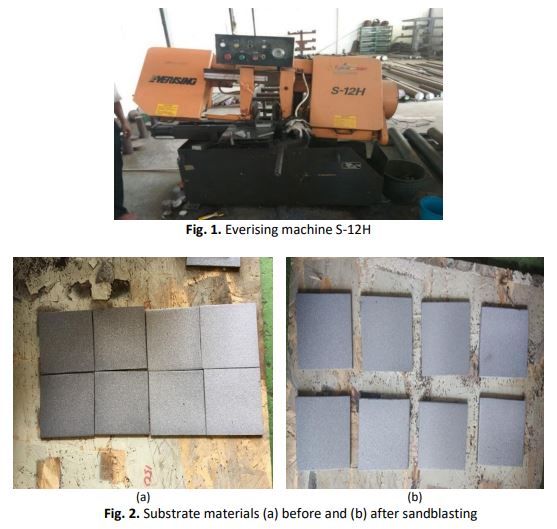The Effect of Post-Heat Treatment on The Mechanical Properties of FeCrBMnSi Coatings Prepared by Twin Wire Arc Spraying (TWAS) Method on Pump Impeller From 304 Stainless Steel
DOI:
https://doi.org/10.37934/arfmts.93.2.138147Keywords:
Impeller, pump, TWAS, FeCrBMnSiAbstract
The Twin Wire Arc Spray (TWAS) is one of the most widely used types of thermal spray coating because of its low cost, high efficiency and can also be used for mass production. However, heat treatment after the Fe-based amorphous coating process uses the TWAS method on pump impellers made of 304 stainless steel are not well documented. The purpose of this study is to determine the effect of post heat treatment after FeCrBMnSi coating with the TWAS method to increase wear resistance on pump impeller materials made of 304 stainless steel. In this study, NiAl and FeCrBMnSi were used as bond coats and top coats. Before the coating process, the substrate materials were sandblasted to obtain a surface roughness of 75 - 100 µm. The coating process is carried out by setting parameters of current spraying (A), voltage spraying (V), compressed air pressure (Bar), and standoff distance (mm) each of 150; 28.4; 5; and 400. Post heat treatment was carried out at a temperature of 500°C and 700°C for 3 hours using Furnace Chamber Thermolyne F6010. Tests of thickness, microhardness (ASTM 92-82), wear rate (ASTM G99-95A), micrography (ASTM E3), SEM, and adhesive strength (ASTM D- 4541) have been completed. The results of this study indicate specimens with post-heat treatment produce a coating layer with better mechanical properties than specimens without post-heat treatment. Specimens with post-heat treatment at a temperature of 700°C for 3 hours resulted in the smallest total wear rate of 6.6x10-4 mm3/s.
Downloads






























